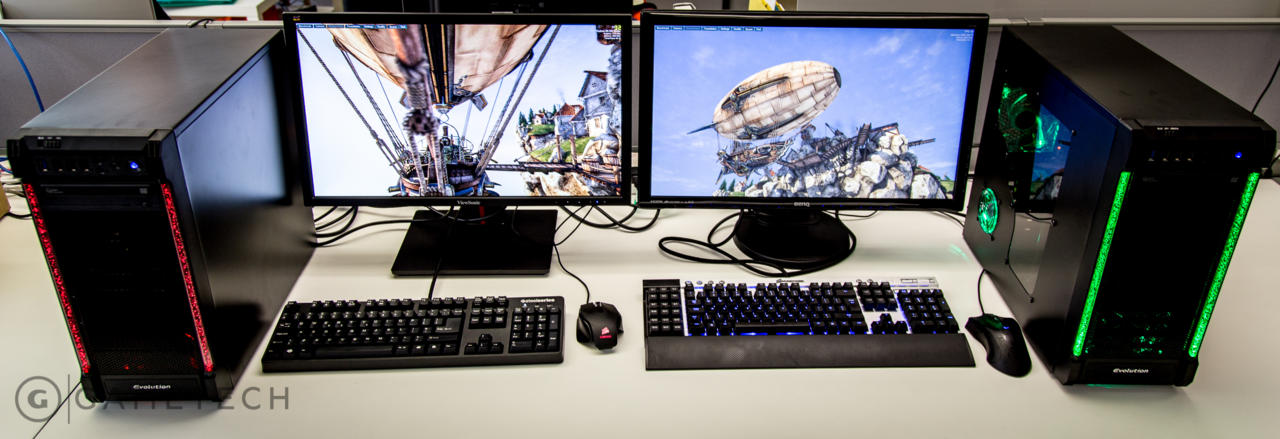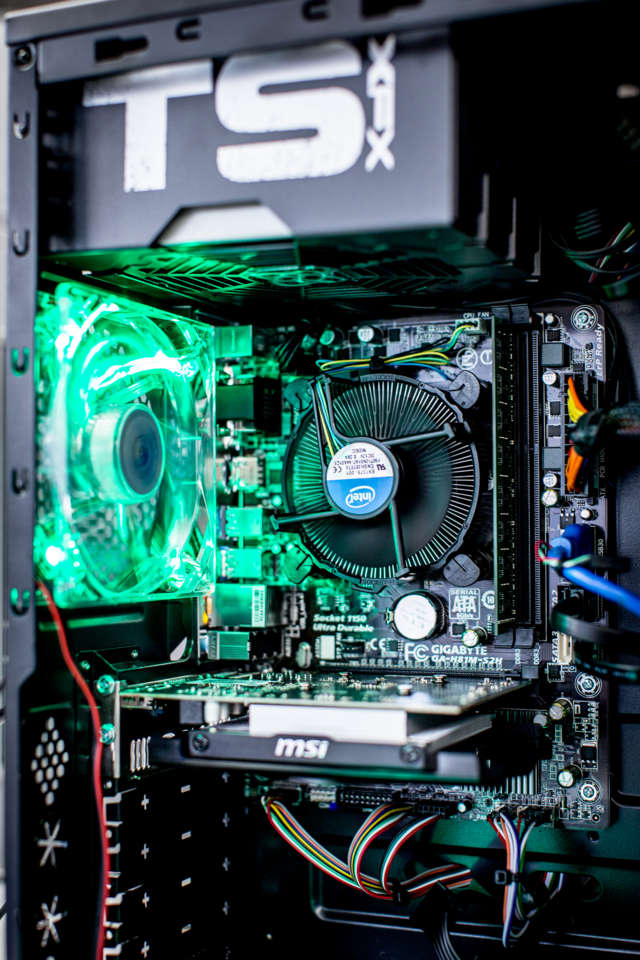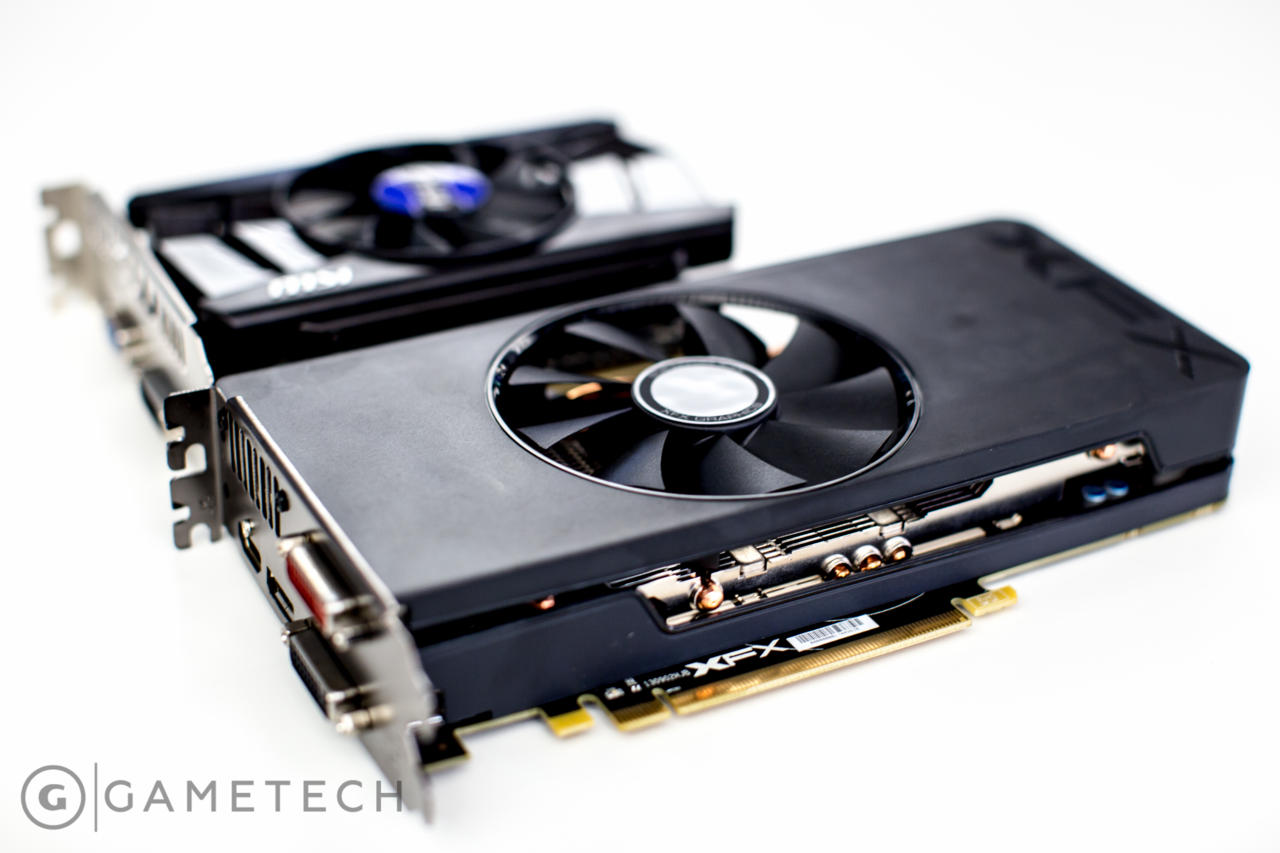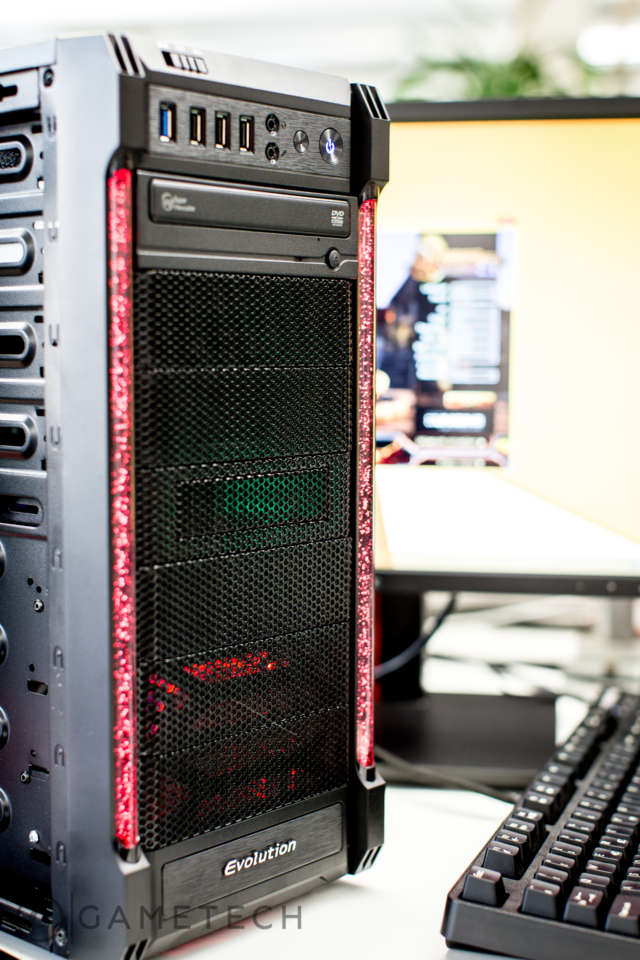While it's the upper end of the GPU spectrum that tends to get the most attention--from press and manufacturer alike--I'd argue the more interesting battle for that coveted PCIe slot lies much lower down the product chain. After all, if a particular brand can give someone a great experience with a cheapo card shoved into an old Dell tower, it'll be top of the list when it comes to an upgrade further down the line. At the budget end, factoring in things like physical size, power, and of course price, is far more important than when you're dealing with top end GPUs like the Nvidia GTX Titan X and AMD R9 295X2, thanks in part to the larger proliferation of small cases and power supplies that cheaper PCs are built with.
The Test Rigs
To that end, finding out who has the best budget GPU means finding the most reasonable set of components to pair those budget GPUs with; if you're spending under $150 on graphics, spending upwards of $500 on a 6-core i7 CPU isn't the wisest move. Unlike when Peter and I build different AMD and Intel machines in an effort to beat the consoles, to keep things fair and to ensure that the only difference in specs would be the GPU, I'm using two identical machines built by the folks over at Freshtech Solutions in the UK. Both are powered by an Intel i5 4460 CPU, which is the budget-CPU at $189 (£148). While some of AMD's offerings are cheaper, they simply can't compete with the single-threaded performance of Intel's Haswell-based chips, particularly as multithreading is still something of rarity in games.


Backing up the i5 is Gigabyte's H81M-S2H, a micro-ATX motherboard that's got just about everything you need for a budget gaming PC, including support for the latest Haswell processors, plenty of USB and SATA ports, and two RAM slots. Given the board costs just $52 (£36), you do take a hit with the RAM and PCIe speeds, which top out at 1600MHz and version 2.0 respectively. That's not the end of the world by any means, particularly when paired with a $150 GPU. That's also still more than enough grunt if you decide to upgrade the GPU to something like an R9 280, or GTX 960 later on. For storage there's a 1TB Seagate hard drive, while power comes courtesy of an 80Plus Bronze XFX TS 650W unit for worry-free upgrades.
The whole lot is housed inside a CIT Galaxy EVO Gaming case. The EVO isn't bad by any means, particularly given it costs just $44 (£30), but it errs toward being functional rather than optimal for the task at hand. All the usual features are present and correct, including plenty of front-mounted ports, seven expansion slots, four 5.25" external bays, one 3.5" external bay, room for up to five hard drives or SSDs, plus two included 120mm LED fans, and one 80mm LED fan that sits alongside the side panel window. Aesthetics aside, concessions have been to fit the price, including a lack of cable management, a top mount for the PSU (which means it'll intake warm air), and fans that are on the high end of the noise scale.
Still, the EVO does do a good job of keeping things cool, and despite the lack of any real cable management, it's possible to tuck cables away in the 5.25" bays. There's also plenty of room for longer GPUs for future upgrades. At a total price of £499 from Freshtech (a similar pre-built PC costs around $600 on Newegg in the US), the system is good value and neatly built, coming in at nearly £100 cheaper than building the system from parts.
The GPUs
Ah, but what about the GPUs? Here's where things get a little tricky. Both AMD and Nvidia make a range of budget gaming GPUs, which go as low as $70 for something like a GeForce GT 730. However, those types of GPU simply don't have enough horsepower to drive high-end games at 1080p at reasonable settings. For that, you to step up to the $150 range, and I'd suggest this is as low as you go for a gaming GPU, outside of any sweet sales promotions. On the Nvidia side, (one-off promotions notwithstanding) around $150 (£99) buys you a GTX 750 Ti, a small GPU powered entirely by the PCI-E bus.

| GTX 750 Ti | AMD R9 270 | |
|---|---|---|
| Architecture | Maxwell | Pitcairn |
| CUDA Cores (Nvidia)/Shader Cores (AMD) | 640 | 1280 |
| ROPs | 16 | 32 |
| Base Clock | 1020MHz | 900MHz |
| Boost Clock | 1085MHz | 925MHz |
| Memory | 2GB 128-bit GDDR5 @ 1400MHz (5600MHz effective) | 2GB 256-bit GDDR5 @ 5400MHz |
| Memory Bandwidth | 86.4GB/s | 179.2 GB/s |
| TDP | 60W | 150W |
| GFLOPs (Single Precision) | 21.8 | 15.4 |

The 750 Ti is based on Nvidia's latest Maxwell architecture, the same architecture behind the likes of the GTX 980 and Titan X. Maxwell's claim to fame is that it's extremely power efficient, which results in a GPU that runs cool and quiet, and in this case, doesn't require extra power from the PSU. That makes it an ideal fit for smaller PCs, or off-the-shelf computers from the likes of Dell and HP that might not include extra power connectors for GPU upgrades. Despite all this power efficiency,
This makes it an ideal fit for small form factor PCs and cheap off-the-shelf computers from the likes of Dell and HP that sometimes feature small power supplies without extra power connectors for upgrades. Despite all this power-efficiency, the 750 Ti's 640 CUDA cores and 2GB of GDDR5 memory put in an impressive performance at 1080p. When I reviewed it at the start of last year, I found that it could run most games at high or medium settings at between 35-60fps, which is extremely good given that it has a paltry TDP of just 60W.
But what if you chucked a bit more juice into the mix? Enter AMD's R9 270, a beefy GPU based on the company's now ageing Pitcairn chip, which was originally released back in 2012 in the HD 7870 and 7850. Given the older architecture, the R9 270 doesn't boast the extreme power efficiency of the 750 Ti and runs with a toastier 150W TDP that requires a single 6-pin power connector. The extra power does get put to good use, though. The R9 270 is essentially just a rebranded 7870 with a slightly slower clock speed, but faster memory attached to a 256-bit memory bus.
That means you get 1280 shader cores, 80 texture units, and 32 ROPs for around $159 (£110). That makes it significantly more powerful on paper, and with the extra wattage on tap, it should overclock nicely too--at least enough to make up for the 75MHz difference between it and the 7870 it's based on.
Overclocking and Benchmarks
One of the great things about GPUs is just how easy they are to overclock, which means that even a budget card can punch far above its weight. Both the R9 270 and the 750 Ti can be given a decent push via software like EVGA's PrecisionX and MSI's Afterburner. However, with the 750 Ti being powered entirely by the PCIe bus (on reference versions at least), there's slightly less scope for overclocking. That said, I was able to add a cool 135MHz to its boost clock and 100MHz to its memory clock, with both remaining stable with a +12mv voltage.
Thanks to the R9 270's 6-pin power connector, MSI's Afterburner allows you to give the GPU's power limit a 20 percent boost. With that, the GPU was stable at 1110MHz and the memory at 1500MHz (6000Mhz effective clock). It's worth noting that while the two particular GPUs I used were able to hit these speeds, your milage may vary. It's easy enough to experiment though, using software to find the sweet spot for your card. If you're new to overclocking, be sure to check out GameSpot's Overclocking for Beginners, which details the basic principles.
| Game | GTX 750 Ti | AMD R9 270 |
|---|---|---|
| Unigine Heaven, Ultra, Ultra Tessellation, 4XAA | 30 | 26 |
| Bioshock Infinite, Ultra, AA | 61 | 67 |
| Tomb Raider, Ultra, No TressFX, FXAA | 52 | 62 |
| Metro: Last Light, Ultra | 38 | 41 |
| Far Cry 4, Ultra, SMAA | 36 | 37 |
| Battlefield 4, Ultra, HBAO, 4XMSAA | 29 | 35 (Mantle) |
It's worth noting that while these benchmarks are still impressive given all the games were run at very high settings, it is possible to hit a solid 60fps in things like Far Cry 4 and Battlefield 4 by switching down to high or medium settings, should you value frame rate over image quality. The Unigine result also shows up the R9 270's ageing architecture, which simply can't match the 750 Ti on floating point performance.
Verdict
So, do you go team red or team green if you're after the best budget GPU? Based solely on performance in games, the R9 270 takes it, pushing average frame rates in games like Tomb Raider above that magical 60fps mark. While it doesn't take a huge lead over the 750 Ti in all games, in general, you do get better frame rates than with the 750 Ti, particularly when using settings that make more of its much higher memory bandwidth.
That said, there is a price to be paid for extra bit of power, namely heat, noise, and power. With a 150W TDP, the R9 270 doesn't boast anywhere near the performance per watt of the 750 Ti, meaning you need to make sure you've got a spare 6-pin power connector, and some decent airflow in your case to get rid of the extra heat. It's not a whole lot of extra heat by any means, certainly nothing compared to something like an R9 290X, but it's something to bear in mind when you're planning a purchase.
The GTX 750 Ti, while not as powerful, has an astonishing amount of performance per watt. That it comes close to the R9 270 with just a 60W TDP is highly impressive. If you don't have access to a computer with a spare power connector, or one with less than stellar cooling, it's a great choice. In the end, though, AMD's cards just offer that little bit more for your money (things like G-Sync notwithstanding), with excellent performance across the board. The company might be lagging behind at the high-end, but for those on a budget, team red reigns supreme.
